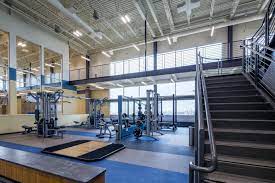As the world progresses towards sustainability, wellness facilities can take advantage of environmentally friendly and energy-efficient methods. A weight loss and wellness center that is energy-free reduces operating costs, reduces environmental impact, and enhances holistic wellbeing. Here’s how you can build an energy-free and self-sustaining wellness center:
Optimize Natural Lighting and Ventilation
Reduced reliance on lights and systems for controlling the temperature is the key in achieving a facility that is energy-free.
Installation of large Windows with Skylights: Maximizing natural sunlight can reduce the requirement for electrical lighting.
Use light-colored walls and reflective surfaces: They enhance the spread of sunlight.
Utilize the Cross Ventilation: Design windows and vents in a way that will encourage airflow and lessen the need for air conditioning.
Invest in Solar and Renewable Energy
Solar energy is among the most efficient methods to create a wellness center free of energy.
Installation of Solar Panels: Installation of Solar Panels to generate electricity to power vital devices and light.
Use solar water heaters: Heating water is ideal to use in spa treatments, showers and even cleaning.
Wind and Geothermal Energy: You should think about Wind turbines and geothermal systems as alternative sustainable energy sources.
Use Energy-Efficient Equipment
LED Lighting: LED Lighting uses up to 80 percent less energy than conventional bulbs.
Energy-efficient Appliances: Choose energy-efficient devices for cooling, heating and everyday operations.
Low-flow Water Fixtures: Low-flow water fixtures reduce the need for water heating and consumption.
Implement Smart Energy Management Systems
Smart technology can assist in optimizing the use of energy and reducing the amount of waste.
Motion-Sensor Lights: Make sure that the lighting is only used when required.
Smart Thermostats: Control temperature effectively by analyzing the amount of occupancy.
Automated Water Systems: Control water usage efficiently in spas and therapy rooms. facilities.
Use Sustainable Building Materials
Eco-friendly materials can increase insulation and decrease energy usage.
Bamboo, and recycled Wood: A durable and green alternatives for furniture and flooring.
Eco-friendly Insulation: Materials such as wool or cotton offer excellent thermal efficiency.
Green Roofs and Walls: Green Roofs and walls improve air quality and offer natural cooling.
Implement Off-Grid Water Systems
The reduction in dependence on the municipal water sources reduces the use of energy.
Rainwater harvesting: Recycle and collect rainwater to be used for drinking purposes.
Greywater Recycling: Recycle wastewater for water and for sanitation.
Composable Toilets: Reduce the use of water and reduce the amount of waste.
Promote a Zero-Waste Policy
The elimination of waste is a key element to an environmentally sustainable health center.
Utilize Biodegradable Products: From cleaning materials to spa services, go for eco-friendly options.
Encourage refillable containers: Reduce the amount of plastic waste you generate by using aluminum or glass dispensers for essential oils.
Composting organic waste: Convert food waste as well as plant debris into rich compost that can be used in gardens.
Educate Staff and Clients on Sustainability
A sustainable weight loss program near me depends on the understanding and cooperation of its staff members and visitors.
Create eco-friendly workshops: Inform staff about the importance of energy conservation and sustainable practices.
Encourage customers to take part: Offer incentives to clients who use reused items or adhere to green practices.
Get rid of paper: Utilize electronic booking systems and e-receipts to reduce the amount of paper used.
Grow an On-Site Organic Garden
Organic gardening not only improves sustainability, but it also increases the quality of life.
Growing Herbal Plants: Utilize fresh, local herbs for treatment and aromatherapy.
vegetable and Fruit Gardens: Supply healthy, organic food items for your wellness.
Compost Waste: Use biodegradable waste for the benefit of the garden.
Monitor and Improve Efficiency Regularly
Continuously enhancing sustainability efforts guarantees an energy independence that lasts for a long time.
Conduct energy audits: Determine areas in which energy consumption is still high and look for alternative sources.
Monitor Water and Energy Utilization: Install monitoring systems to prevent waste.
Take advantage of New Technologies: Stay up to date on developments in the field of sustainable wellness solutions.
Conclusion
A zero-energy wellness center is attainable by implementing a strategic plan and committing to sustainability. Through harnessing renewable energy while optimizing resources and embracing eco-friendly practices, wellness centers can run efficiently while helping to improve the health of the world. This not only benefits the environment, but it also supports the mission of the wellness industry to promote a holistic and healthy lifestyle for communities and individuals alike.


